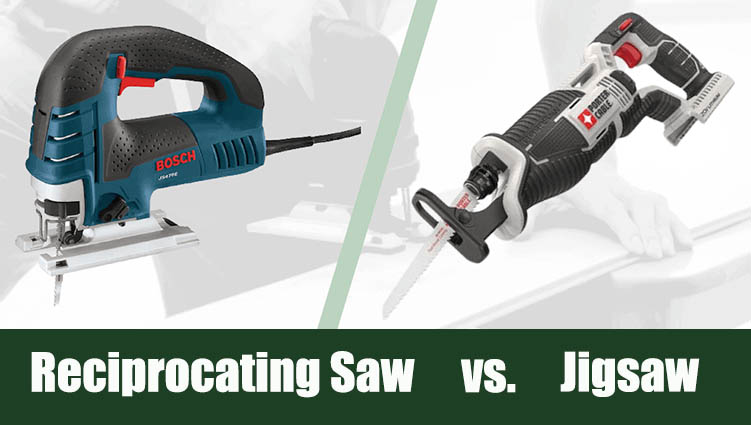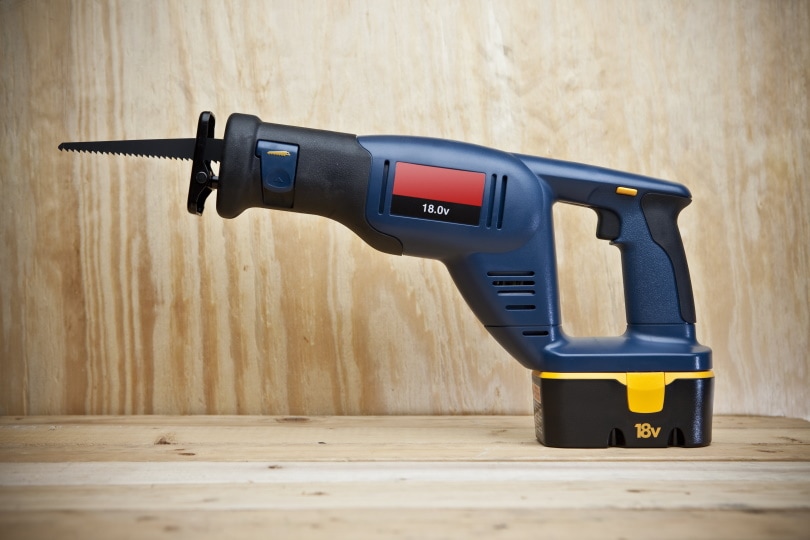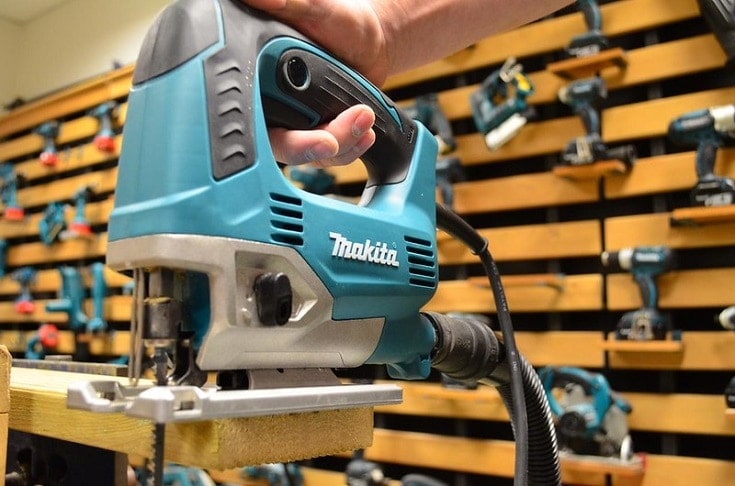Reciprocating Saw vs Jigsaw – Which One to Choose?
-
Pete Ortiz
- Last updated:

Choosing between a reciprocating saw or a jigsaw is a tough choice. They both are chart-toppers for versatility and are excellent options for the average homeowner and the professional handyman. Although there is some overlap in what they can do, they each shine in different situations. Let’s do a quick run-through on their design and then look at a few common scenarios to see how they stack up. We hate to tell you, but you may end up needing a reciprocating saw and a jigsaw in your arsenal.
Reciprocating Saw
A reciprocating saw gets its name for a reason. A reciprocating saw moves back and forth, in and out. As it moves, its massive tooth-like blade works to break down and cut through the objects in front of it. A reciprocating saw is used for more rough-cutting projects. If you don’t have a detailed or delicate cut to make, you will make fast work with the reciprocating saw. When working with a reciprocating saw, you usually hold it out in front of you with one hand on the handle and another supporting the center base of the saw.

• Landscaping: Although a chainsaw is going to be your best bet for heavy tree work, a reciprocating saw does a great job on low hanging branches that need to be trimmed or even helping tear through some firewood.
- Strong, sturdy and durable
- Easy to use out in front of you during demolition
- Easy to replace blades
- Not suitable for intricate cuts
- Can be a bit of a beast to handle, it jumps around a lot while cutting
- The cut is not always immaculate
Jigsaw
Although a jigsaw is a type of reciprocating saw with the blade anchored only at one end, it sticks out of the bottom of the tool. Jigsaw blades are smaller, narrower, and more fragile than those used in a recip saw but also come in a wide array of styles to match the material you’re working with. You can use a jigsaw out in front of you, but it is more often used while you’re leaning over the work surface.

- Patterns: If you are cutting something like a wooden sign, you will absolutely need the help fo a jigsaw. A reciprocating saw would make your sign look as though a preschooler did it. The jigsaw blade is much more delicate and capable of following a specific pattern. Some jigsaws even have laser guides to help you stay on track.
- Circles: Not very many saws are capable of cutting a circle. Although you could technically try and cut a circle with a reciprocating saw, this would be a very rough cut. The jigsaw is perfect, too, for cutting a circle out of a piece of wood.
- Tiny Cuts and Detail Work: You know that piece of trim that just needs a ½ inch cut off on a 45-degree angle. A jigsaw is an excellent option for that. When you have detail work to complete the jigsaw will be your go-to tool.
- Great for cutting patterns
- Smaller in scale and easy to use
- Lightweight and portable
- Not great for demolition projects or rough work
- Won’t do well in outdoor trimming situations
- Blades tend to snap at times as they are not as strong
Safety
A jigsaw is considered one of the safest saws on the market. If you follow proper safety protocol and steps while using a jigsaw, there is very low risk for injury. A reciprocating saw, on the other hand, can be a bit dangerous. You will notice that the blade itself is not very well protected, so you are exposed to it while you are cutting. Especially when using a reciprocating saw on demolition or landscaping work, you need to be very aware of where that blade is so that you don’t end up on the wrong side of it.
Pricing
There is no significant difference in the pricing of these saws that would make price a factor in determining which saw is best for you. Both jigsaws and reciprocating saws are offered in standard versions and high-end models.
Conclusion
One of these saws is not better than the other they are used for very different things. It’s almost impossible to use a jigsaw for some of the same projects you would use a reciprocating saw for and vice versa. Although we usually try to help and find you tools that are versatile and great for a variety of projects, you may end up needing both a jigsaw and a reciprocating saw as part of your saw collection.
Contents


